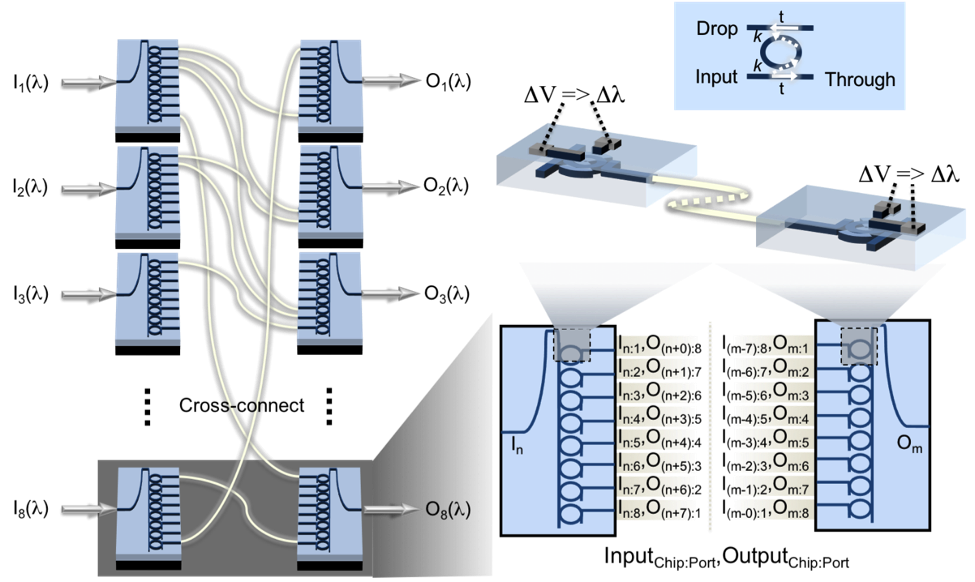Multi-chip Optical Switches for Flexible Energy Efficient Datacenters
Dr. Dessislava Nikolova and doctoral student David M. Calhoun and collaborators have published an article, "Modular architecture for fully non-blocking silicon photonic switch fabric" in the Nature Microsystems & Nanoengineering magazine. Both are members of Professor Keren Bergman’s “Lightwave Research Laboratory”, who is herself a contributor to the paper.
Today’s datacenters are collections of many servers that handle billions of data files. In order to execute big data analyses, these servers must be able to communicate with each other, quickly and efficiently. This connectivity is achieved through switches which connect many servers and storage devices. A recent development is the replacement of electrical cables with optical fibers that offer higher speeds at longer distances and are able to send data using less energy. Introducing fast optical switches in the datacenter has the potential to enable flexible ultra-high-capacity energy efficient data movement.

An optical switch can be significantly miniaturized using silicon photonics, which is based on the same technology used to make computers chips. Fast, nanoscale optical switches can also enable emerging applications in computing architectures such as optically interconnected processors and memories.
An optical switch routes an incoming optical signal from an input to a destination output without converting the light to an electrical signal. On its route inside the silicon photonic switch, the light passes through many nanophotonic devices (nanoswitches) where it selects one of two paths. For example, at each “nanoswitch” the light signal can either stay on its path or switch to a different path. One of the problems with this process is that, unlike electricity, light has a tendency to spread and leak to neighboring devices causing crosstalk. This crosstalk deteriorates the quality of the signals and limits the number of devices a switch can connect.

So far most of the research on silicon photonic switches has focused on integrating as many devices possible on a single chip. Our work takes a new direction, where we divide the switches over multiple chips instead of putting them on a single chip. In a similar way that computers have moved from single processors to multi-core architectures, our switch uses multiple chips to guide the light to the desired output. In our design, photonic chips are combined to form one large switch fabric. We demonstrated a proof-of-concept for an 8x8 switch fabric by assembling multiple photonic chips offering multiplexing functionalities. The photonic chips used are compatible with standard silicon computer chip manufacturing. Our switch can guide light from any input to any output, has ultra-low crosstalk, can scale to a large number of inputs and outputs, and is straightforward to control.

Our unique modular “divide and conquer” approach has a very important design advantage. Using our approach, we need to perfect the design of only a small component instead of having to design a complex photonic chip with many nanoswitches. The separation of a switch fabric into functional building blocks using multiple photonic chips also offers the advantage of piece-wise manufacturing, packaging, assembly, and fewer electrical controls, paving the way for large scale systems that use standard chips stacked like LEGO blocks to create 2.5 dimensional fast and energy efficient photonic systems.